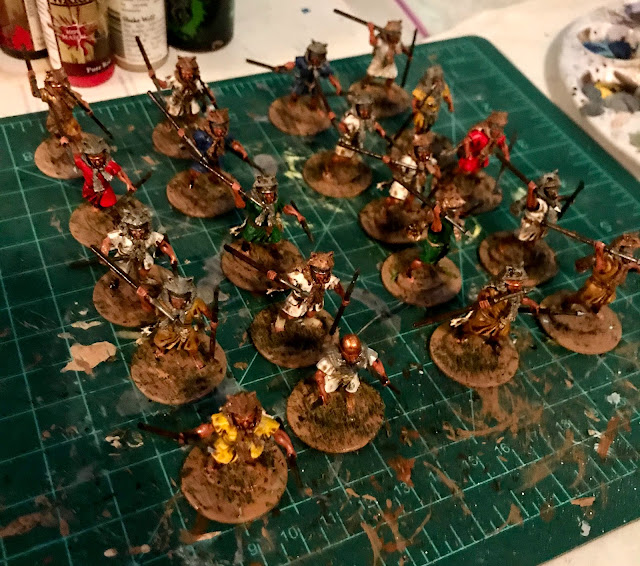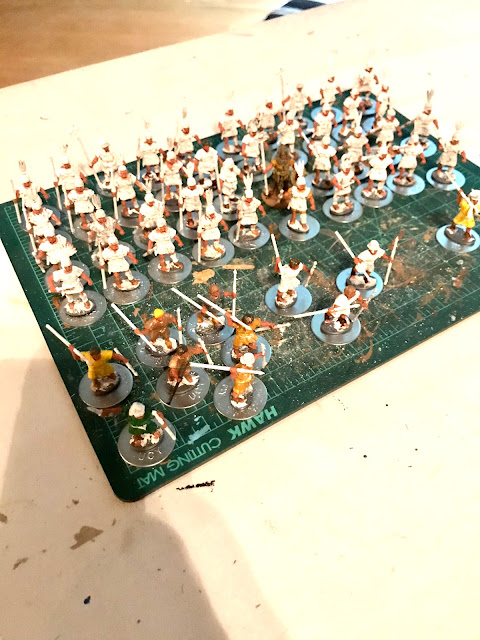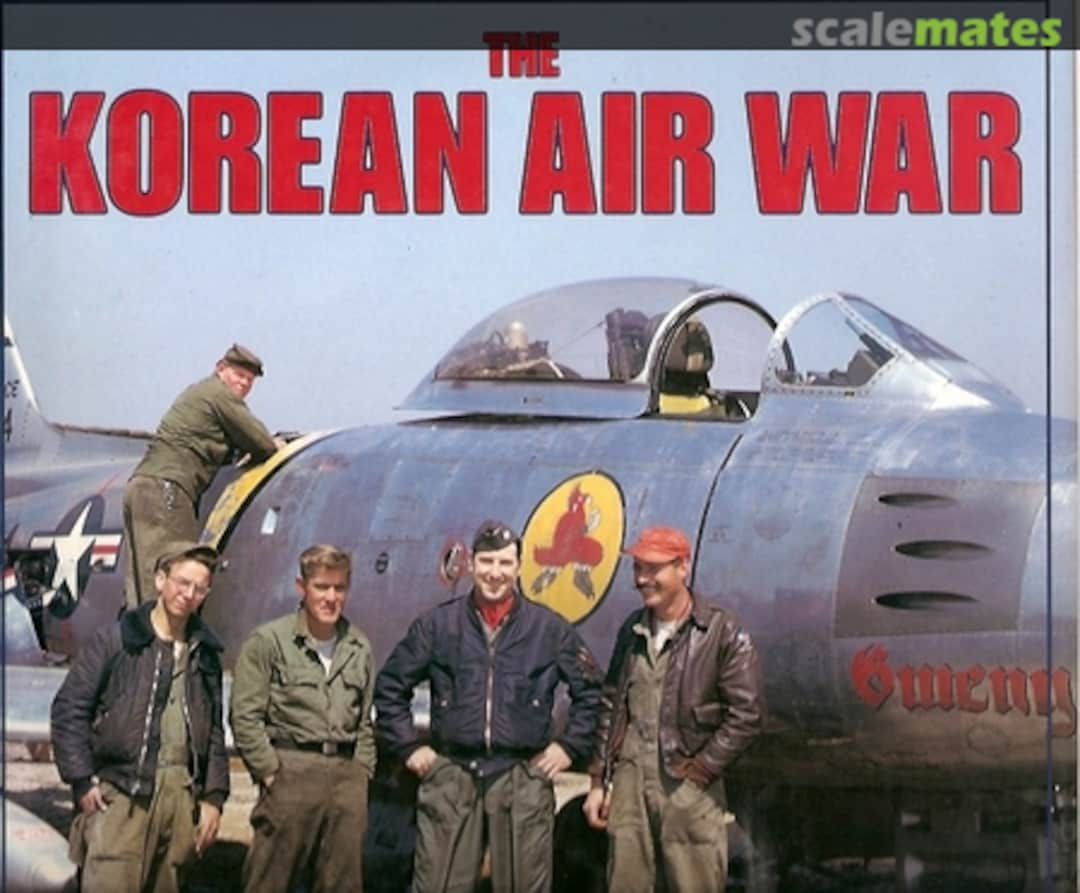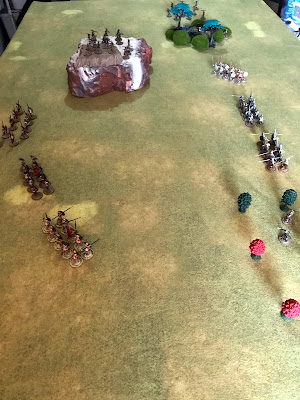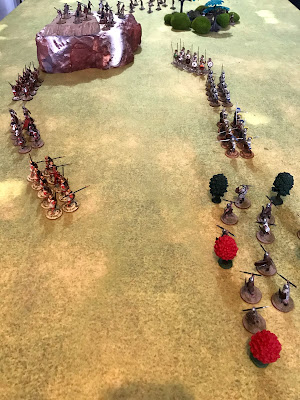MIG Alley was the nickname for the Northwest corner of Korea, where the Yalu River enters into the Yellow Sea. This was the area where Communist MIG-15s tended to scrap with USAF Sabres for control of the skies. Here, high above Korea was the site of many of the first Jet-vs-Jet battles in history.
The Korean War officially began June 25th, 1950. The initial air battles were fought between the North Korean Air Force using old WWII era planes, and the South and their allies. The USAF used later WWI propeller driven aircraft and some early Jet aircraft.
On November 1st, 1950 the first MIG-15 jet fighters attacked a flight of USAF F-51 Mustang fighter-bombers. Later that day, the first jet vs. jet combat took place between the MIg-15 and the F-80 Shooting Star. The USAF's early jets were inadequate for the task, and soon the USAF was resupplying and using the new F-86 Sabre to counter the Communist threat.
The MIG-15's during the early phase of the war were secretly being operated by the Soviet Unions highly skilled 64th Fighter Aviation Corp. While the Soviet pilots were engaging in the air, they were also starting to build up the North Korean and Chinese pilots to eventually rotate in and replace them.
As the F-86 began to appear in the skies over North Korea Mid-December the stage was set for a clash for control of the Skies over North Korea between the MIG-15 and the F-86 Sabre.
Sortie: We randomly determined who the Attacker/Defender was and UN forces decided to be the attackers. The Sortie was also randomly determined to be a Combat Air Patrol.
Set-up:
We used the standard rules to create the set-up for this sortie. The weather was determined to be clear.
Since this is a standard Combat Air Patrol in MIG Alley, no additional terrain is needed. However, we add some hills on the edges of the board, ad determine them to be difficult terrain at Low Altitude.
The board is 48MU by 48 MU and an MU equals 1 inch.
Forces:
Today's battle will be using my (in)famous Paper Templates.
USAF
4 F-86 Sabres- Experienced Pilots
Soviets
4 Mig-15s- Experienced Pilots
This will be a straight up dogfight between the two sides of equal points and aircraft.
Turn 1:
Detection Phase:
Things start out with both sides rolling very well for detection. The Mig-15's and the F-86's are both detected by the enemies radar systems. Since the USAF are the attackers, they choose to have the MIG-15's place first.
Since the MIG-15 is an excellent climber, the Soviets decide to place themselves at Low altitude to start with. The MIGS deploy with their Leader out front on the east side, and the rest deployed within 12 MU in echelon.
The F-86 Sabres decide to deploy at High Altitude as they are better at diving on their foes. They deploy with their leader in the center of the board, and use a tight "Finger Four" formation. Since they are at high altitude, I put two dice under each template. The MIGS at low altitude need no height markers. There are only Low, Combat, and High Altitudes in the game, and I use dice under the template/base to represent height changes.
When deploying, all aircraft of the same type need to deploy at the same altitude and within 12 MU of another craft of the same type. This represents the aircraft working together as part of a squadron at deployment.
Rookie:
All the pilots in this battle are experienced Pilots. Therefore, they will be able to move and act in the Rookie Phase and the Experienced Phase, but not the ACE phase.
MIG #3 and #4 take 20 degree turns and head towards the hills. Meanwhile the Sabres press ahead, as do MIG #1 and #2. No one is close enough for any shooting..... yet.
Experienced:
MIG #4 needs to go up 1 altitude to avoid any issues with the hills. Otherwise, he and MIG #3 stay on course to the outside edge of the oncoming furball. The Sabres all keep moving straight. MIG #1 and #2 do the same.
The distance is still too great for shooting. Timing your Dives/climbs and turns for maximum effect is not easy.
Turn 2:
Detection: All Planes are detected and deployed.
Rookie:
MIG #3 stays on course to the western hills.
The lead Sabre dives on MIG #2 and opens fire at long range. The .50 Cal machine guns in the nose of the Sabre open fire with a burst at long range, but the MIG evades it with a successful maneuver test.
MIG #2 moves closer to the lead Sabre and opens fire with their cannons. He scores 2 hits, and the Sabre only scores 1 Maneuver success. The wing leader is shot from the sky! MIG #2 still has ammo for the next Sabre.
Sabre #3 stays at High Altitude, judging the Dive would not get a MIG in his fire arc. MIG #4 breaks back towards the furball with a 45 degree turn. Planes can turn OR change altitude, but not both in a turn.
Sabre #2 turns towards the western hills and MIG #3. MIG #2 turns at low altitude to fall in behind MIG #2. Sabre #4 dives down to low altitude now as well.
Experienced:
MIG #3 turns back into the furball in the valley. Sabre #2 swoops down at him, but misses the angle and overshoots! MIG #2 makes a sharp turn and gets the angle on Sabre #2, but it will be a Deflection shot. He opens fire with his cannon and gets 2 successes. The Sabre only gets 1 Maneuver save and his taken down by the MIG! However, MIG #2 is out of ammo!
Sabre #3 swoops from high altitude to low altitude and opens fire on MIG #1. He scores 1 hit, and the MIG pilot scores 0 Maneuver saves. Scratch 1 MIG! However, Sabre #3 runs out of ammo due to the long burst he used.
MIG #3 goes up altitude, while Sabre #4 turns in to the attack. He gets a bead on Mig #2 and opens fire with long bursts from his nose machine guns. However, the MIG maneuvers away from the shots as the Sabres guns run dry.
With 2 Sabres down and the rest Out-of-Ammo, we move into the Disengagement Turn.
Turn 3- Disengagement Turn
Detection: All planes detected and deployed.
Rookie:
MIG #4 turns into the dogfight and gets a bead on Sabre #4. he opens fire at combat range, but the Sabre avoids the cannon fire. The MIG is out of ammo. Sabre #4 takes a hard, high-G turn and tries to bug out. He flies in low over the hills with a successful Maneuver check.
MIG #3 sees no shot, and decides to get to safety. He climbs to high Altitude to avoid contact. Sabre #3 goes guns the throttle to get out of there and tries to break contact.
MIG #2 and MIG #4 break contact by climbing to High Altitude.
Experienced
No one wishes to engage further and the game is called.
Conclusion
The Soviets win with 2 Kills to 1 Kill. When the last remaining Sabres ran out of ammo, it was all over but the crying!
As the Soviet player, I was lucky that the Wing Leader's swooping attack failed to stick. From there, I had the USAF on the back foot and I was able to concentrate firepower more effectively. As always, my daughter did a better job of keeping her forces and firepower together, but this time my flanking maneuver to attack in echelon paid off.
Here are some high level thoughts on the game:
- That was quick, quick, quick!
- The rules were super easy to play.
- Timing your dives, climbs, and turns is harder than you would think.
- Timing is critical as the engagement window is small with straight fire arcs on 1 altitude band
- Turning vs Altitude change is a big decision point
- Choosing when to shoot matters as you WILL run out of ammo, so make every shot as high percentage as possible!
- Detection played no part in this battle.
Overall, that was quick and fun. There was decision making, but no one was agonizing over the mechanics of flying. Instead, it was about how and when to engage and shoot. So, it worked well as a game and met my design goals.
The next question is how historically accurate is it? Traditionally, Mig patrols were looking for B-29's to take out. They would often fly low and then quickly climb to attack them. Sabres would fly high and then dive in to the attack, while the Migs would scatter and try to out climb the USAF to get away from danger. The USAF valued enemy aircraft kills, while Soviet pilots were less focused on dogfighting and more focused on interception. My daughter doesn't know any of that, but naturally adopted the "swooping" tactic based on her reading of the aircraft profile.
In the end, much of this dog fight was vertical vs. horizontal which is pretty accurate. The "shooting" only lasted a few moments and there was no protracted "dogfighting" like in WWII. It ended with the USAF running out of ammo, which was not uncommon. Then, the Migs going high to get away from danger which was a common tactic. It matched a "typical" encounter of the period with one glaring exception. The Soviets won and drove the Sabres off. Usually, the Migs were the ones to bug out from an USAF CAP!
Or our website:
Or our Messageboard:
Or our Wargames Vault Page:



